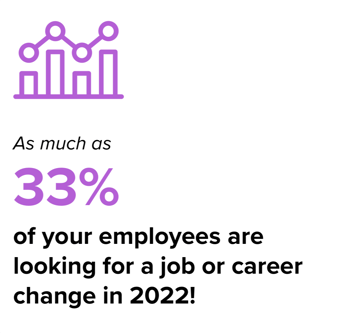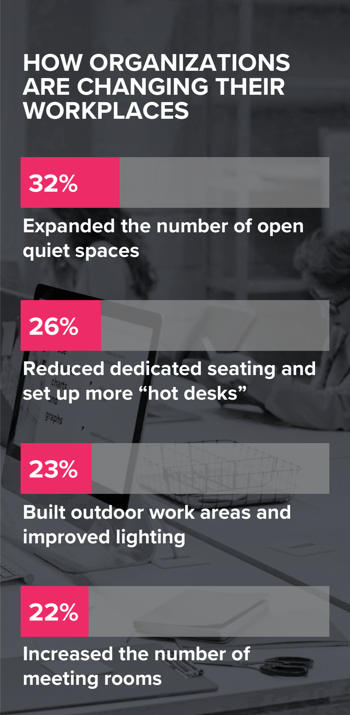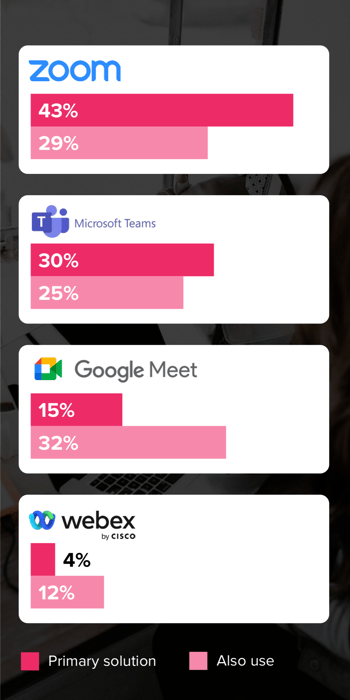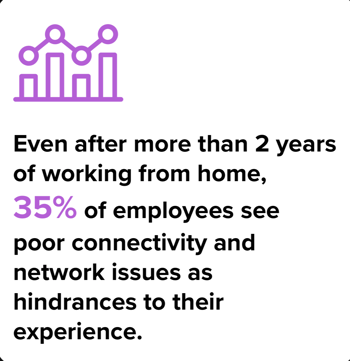What the Great Resignation Means for Your Organization

As we face the Great Resignation, organizations run the risk of losing employees if they do not become Employers of Choice.
Organizations must pay attention to these trends because they face:
- Losing talent to competition
- Impacting the productivity and output of the employees who remain
- Having a dissatisfied workforce
- Difficulty in attracting new talent
- Spending time and resources on onboarding and training new employees
Employees are Demanding Greater Flexibility
Flexibility is no longer a good-to-have. It is imperative for organizations to offer employees options when it comes to their work locations and hours.

The hybrid work model is here to stay, as the only way to provide employees with the flexibility they demand. This will mean that organizations will have to:
- Re-design the physical workplace to cater to the hybrid work model.
- Ensure that employees have consistent experience irrespective of their location.
Ecosystm Opinion
Be an “Employee-First” organization in this new era of work. This will require building an infrastructure that supports this journey. Ensure that your IT team can manage the changes that lie ahead. It is highly likely that this transition will put extra pressure on IT!
Use these trends as a catalyst to talk about what employees want from their workplaces, even if you cannot execute on every preference. Listening is crucial and many enterprises fail to do that! For most enterprises, reverting to the status quo won’t be an option. Employees will expect greater flexibility, the best technology, and will want to be part of a workplace culture that suits them – organizations must heed that call.
The Physical Workplace Must Evolve
Gone are the days where employees can sit in packed offices and cubicles. All employees will not always be in the office; often they will come in for specific purposes such as important in-person meetings and brainstorming sessions.
Offices today need to be redesigned to have:
- Fully equipped meetings rooms with digital whiteboards and videoconferencing facilities
- Smaller huddle rooms for brainstorming sessions
- Dedicated training rooms
- A more flexible open plan
This transition needs to be planned well.
The IT team should be equipped to lead the change and not be burdened with unnecessary challenges. The employees should be able to use the office and technology with minimal disruption to their work.

Employees are Demanding Best-in-Class Technologies

Building on the right workplace requires the right technologies. Video has proven to be the most effective tool for office collaboration in recent years. The design of the video experience in the office should ensure there is equal representation for all on call, irrespective of location. Working in an open office comes with the challenge of managing noise. Noise cancellation headsets and AI-based noise cancellation devices are becoming more important.
With multiple devices and applications being used, interoperability issues will arise; making proactive monitoring essential.

Employees Choose the Platform that Drives the Best Experience

Employees shift between collaboration platforms based on preferences and on the nature of the interaction.
They might use Microsoft Teams for internal collaboration and shift to Zoom for presentations. Zoom, Microsoft Teams, Google Meet and Webex by Cisco are the top platforms used by knowledge workers in Asia Pacific - with Zoom and Microsoft Teams being the two most widely used platforms. Ease of use and the ability to collaborate and share documents well, have been some of the reasons why both these platforms have seen a high uptake.

Connectivity and Network Remain a Challenge in the Work from Anywhere Model

Technology teams can mitigate these challenges by:
- Constantly monitoring connectivity and suggesting ways for it to be improved especially when working from home.
- Alerting employees if there are interoperability issues likely to arise due to the devices they use.
- Constant monitoring of network, applications and device performance.
- Having a dedicated team supporting employees in the event of an emergency.
- Real-time troubleshooting.
Security a Concern in the Work from Anywhere Model
The shift to remote working during the pandemic coincided with a significant rise in cybersecurity incidences as criminals sought to take advantage of the disruption.
Not having full visibility of usage and potential threats can have immense operational, financial and reputational repercussions.
Organizations have to ensure that the security measures put in place do not impact the employee experience. VPN connections should work, multi factor authentication systems should be seamless - the employee experience will depend on how much they can trust these measures.

Get Your Work from Anywhere Strategy Right
In the Work From Anywhere model, technology has an immense role to play in defining employee experience. It can drive productivity, attract talent, and foster an overall positive workplace culture. The most critical element is ensuring the technology works seamlessly and there is minimal disruption to work!
Technology teams must focus on:
- Ensuring that there are no interoperability issues irrespective of the location of work.
- Managing remote employees’ network and connectivity issues.
- Cybersecurity measures to monitor abnormal behavior patterns.
- Allowing employees to use multiple collaboration platforms.
Ecosystm Opinion
Employers should seek feedback from employees on their technology needs and preferences. This will allow organizations to build an empowered Work from Anywhere model. Never assume that the technology employees currently have are the ones that can help them do their jobs best.



